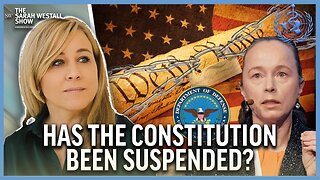Premium Only Content

Mastering ISF Modifications: Tips and Tricks for Customs Brokers and Importers
License To Import // 323-578-6432 // file@licensetoimport.com // www.licensetoimport.com
In today's episode, we delved into the process of handling changes or modifications to the Importer Security Filing (ISF) information after its initial submission. It is crucial to be proactive and timely in addressing any updates that need to be made, as errors or outdated information can have significant implications for importers. The first step is to identify the need for a modification, which can result from various factors such as data entry errors, changes in shipment details, or regulatory requirements. Once a modification is identified, working closely with a customs broker or import specialist is essential. They possess the knowledge and expertise to guide you through the process and ensure compliance with customs regulations.
After the need for modification has been established, the next step is to gather all necessary documentation that supports the modification request. This may include commercial invoices, bills of lading, packing lists, and any other relevant information. Having these documents readily available facilitates a smooth and expedited process, minimizing delays or penalties. Once the required documentation is in hand, your customs broker will assist you in submitting the modification request to the appropriate authorities, ensuring accurate entry and prompt transmission to Customs and Border Protection (CBP).
It is important to understand that certain changes to the ISF information may require additional approvals or clearances. For example, modifying the consignee or the port of discharge may necessitate authorization from the shipping carrier or the port authority. Your customs broker will guide you through this process, helping you obtain the necessary approvals. In situations where modifications need to be made after the shipment has already left the foreign port, notifying your customs broker immediately is crucial. They will assist you in implementing the necessary changes and ensuring compliance with all relevant regulations.
Timing plays a crucial role in modification handling. Any changes or modifications made after the initial ISF submission should be done as soon as possible to avoid penalties, inspections, or potential denial of entry for your goods. In summary, here are the key steps to follow when handling changes or modifications to the Importer Security Filing information: promptly identify the need for modification, work closely with your customs broker or import specialist, gather all required documentation, submit the modification request through your customs broker, obtain any additional approvals or clearances if necessary, notify your customs broker immediately if changes need to be made after the shipment has departed, and make modifications as soon as possible to mitigate penalties and delays.
We hope you found this information valuable, and we invite you to check out our upcoming videos where we will continue to explore various topics related to customs brokerage and international trade. Be sure to subscribe to our channel for more informative content. Happy importing!
#usimportbond #isfcustomsbroker #uscustomsclearing #isfentry
Video Disclaimer Here: This video is solely for education and is not endorsed by any US government agency.
00:27 - Promptly identify the need for modifications to Importer Security Filing (ISF) information.
00:49 - Collaborate closely with customs broker or import specialist for guidance and compliance.
01:03 - Gather all required documentation to support modification request for expedited processing.
01:23 - Submit modification requests through customs broker, obtain necessary approvals, and make changes promptly to avoid penalties or delays.
-
 1:45:26
1:45:26
Kim Iversen
5 hours agoBANNED for Telling the Truth: The 9/11 and Epstein Plot They Don't Want You To Hear
34.8K30 -
 LIVE
LIVE
Man in America
7 hours agoDr. Makis EXPOSES Big Pharma’s SICK Vaccine Scam—RFK Jr. Must Act NOW!
2,765 watching -
 1:28:21
1:28:21
Glenn Greenwald
6 hours agoRFK Jr. Hearing Reveals DC Pro-Pharma Consensus; Trump's Executive Order to Deport Student Protesters Criticizing Israel; Untangling DC Think Tank Funding & Influence | SYSTEM UPDATE #399
89K100 -
 1:23:44
1:23:44
Space Ice
6 hours agoSpace Ice & Redeye: Van Damme's The Quest: Pirates, Clowns, James Bond & Bloodsport
23K1 -
 59:57
59:57
The StoneZONE with Roger Stone
4 hours agoJ6 Martyr Enrique Tarrio Describes Inhumane Prison Conditions Ordered by Biden | The StoneZONE
21.5K -
 16:48
16:48
Tundra Tactical
3 hours ago $0.13 earnedAffordable Medical Gear From ACETAC SHOT Show 2025
17.1K1 -
 1:46:16
1:46:16
Redacted News
7 hours agoRFK CONFIRMATION: Kennedy goes to WAR with Big Pharma Democrats in Fiery Hearing | Redacted Live
183K332 -
 57:31
57:31
Candace Show Podcast
7 hours agoBREAKING! Taylor Swift Turns Against Blake Lively & Ryan Reynolds | Candace Ep 141
181K185 -
 1:04:59
1:04:59
Sarah Westall
4 hours agoRFK Jr Report, Constitution Suspended, War Time Procedures in Place, WHO Exit, DOD w/ Sasha Latypova
34.5K25 -
 1:56:37
1:56:37
Melonie Mac
8 hours agoGo Boom Live Ep 35!
43.2K11